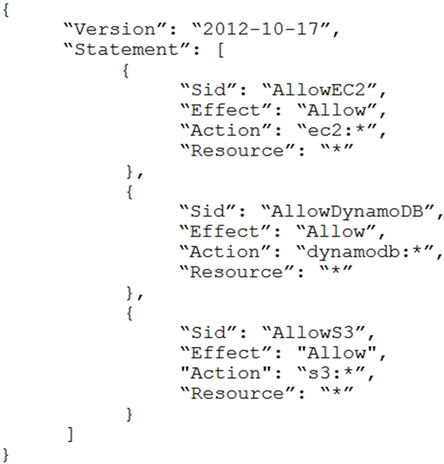

A company is in the process of implementing AWS Organizations to constrain its developers to use only Amazon EC2, Amazon S3, and Amazon DynamoDB. The
Developers account resides in a dedicated organizational unit (OU). The Solutions Architect has implemented the following SCP on the Developers account:
When this policy is deployed, IAM users in the Developers account are still able to use AWS services that are not listed in the policy.
What should the Solutions Architect do to eliminate the Developers' ability to use services outside the scope of this policy?
Waiweng
Highly Voted 3 years, 9 months agostudent2020
Highly Voted 3 years, 8 months agojoe16
3 years, 8 months agotekkart
3 years, 8 months agosumaju
1 year, 7 months ago3a632a3
Most Recent 1 year, 5 months agoTravelKo
1 year, 10 months agoGod_Is_Love
2 years, 4 months agoGod_Is_Love
2 years, 4 months agomrgreatness
2 years, 8 months agowassb
2 years, 9 months agoaandc
3 years agotkanmani76
3 years, 6 months agoAzureDP900
3 years, 7 months agopcops
3 years, 7 months agostudent22
3 years, 8 months agoRedKane
3 years, 9 months agoRedKane
3 years, 9 months agoRedKane
3 years, 9 months agoalisyech
3 years, 9 months agodidek1986
3 years, 9 months ago